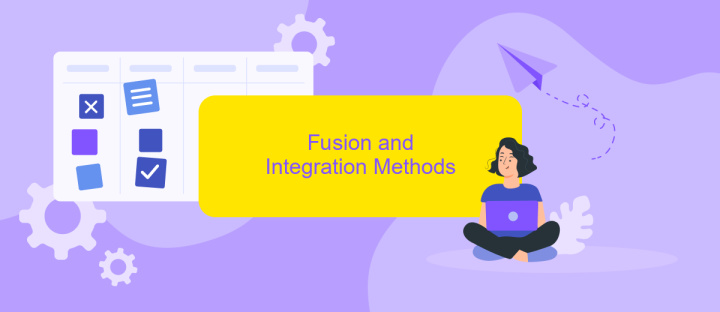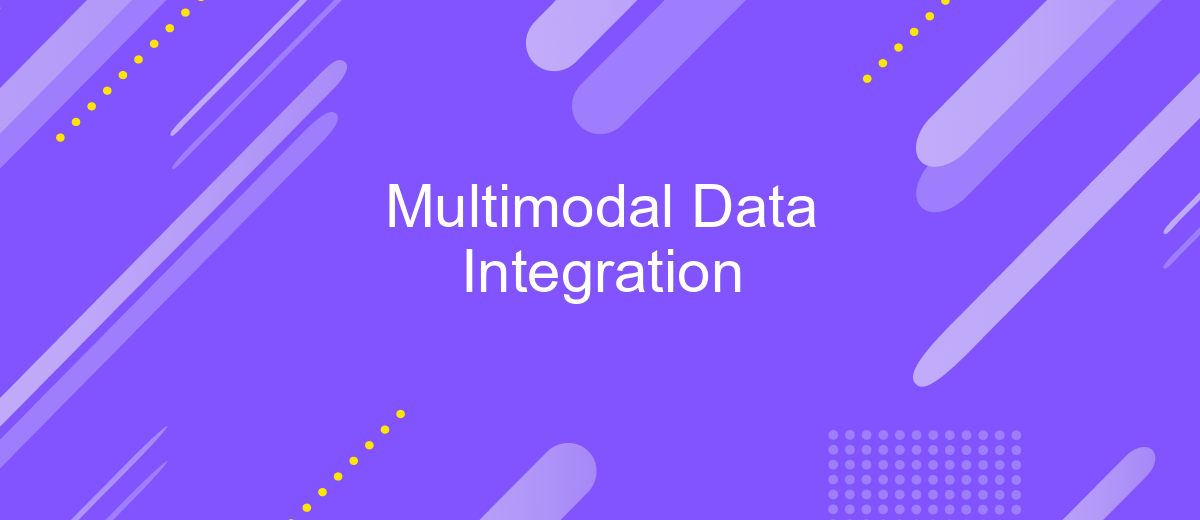Multimodal Data Integration
Multimodal data integration is an emerging field that combines diverse data sources to provide comprehensive insights and enhance decision-making processes. By integrating data from various modalities such as text, images, and sensor readings, this approach enables more robust and accurate analyses. This article explores the principles, methodologies, and applications of multimodal data integration, highlighting its significance in today's data-driven world.
Introduction
In the rapidly evolving landscape of data science, integrating data from multiple sources has become essential for comprehensive analysis and informed decision-making. Multimodal data integration refers to the process of combining data from various modalities, such as text, images, audio, and structured data, to gain deeper insights and improve predictive accuracy.
- Enhanced data analysis through comprehensive datasets
- Improved predictive models by leveraging diverse data types
- Streamlined decision-making processes
One of the key challenges in multimodal data integration is managing the complexity of different data formats and sources. Tools like ApiX-Drive facilitate this process by providing seamless integration services, enabling users to connect and synchronize data from various platforms effortlessly. By leveraging such tools, organizations can ensure that their data integration processes are efficient, accurate, and scalable, ultimately leading to more robust analytical outcomes.
Data Preprocessing and Representation

Effective data preprocessing and representation are crucial steps in multimodal data integration. Initially, raw data from various sources must be cleaned to remove noise and inconsistencies. This involves handling missing values, normalizing data formats, and correcting errors. Techniques like tokenization, stemming, and lemmatization are applied to textual data, while image data might undergo resizing, normalization, and augmentation. Ensuring data quality at this stage is vital for the success of subsequent integration processes.
Once the data is preprocessed, it needs to be represented in a unified format to facilitate integration. This often involves transforming data into vectors or embeddings that can be easily combined. Tools like ApiX-Drive can automate the integration of different data sources by providing pre-built connectors and workflows. These services streamline the process, allowing for seamless data flow between disparate systems. By leveraging such tools, organizations can efficiently integrate multimodal data, leading to more comprehensive insights and better decision-making.
Fusion and Integration Methods

Integrating and fusing multimodal data is crucial for gaining comprehensive insights and improving decision-making processes. Various methods and techniques are employed to achieve effective data fusion and integration, ensuring that diverse data sources can be combined seamlessly.
- Early Fusion: This method involves combining raw data from different modalities at the initial stage, followed by a unified processing pipeline.
- Late Fusion: Here, data from each modality is processed independently, and the results are combined at the decision-making stage.
- Hybrid Fusion: A combination of early and late fusion, leveraging the strengths of both approaches to enhance integration accuracy.
- Feature-Level Integration: Extracted features from different modalities are fused before feeding into a model for further analysis.
- Decision-Level Integration: Independent decisions from each modality are integrated to form a final decision.
Services like ApiX-Drive facilitate seamless integration by providing tools to connect and automate data flows between various platforms. These services simplify the integration process, allowing users to focus on analyzing the fused data rather than dealing with technical complexities. Utilizing such services can significantly enhance the efficiency and effectiveness of multimodal data integration efforts.
Applications and Case Studies

Multimodal data integration has found widespread applications across various fields, significantly enhancing the way complex datasets are analyzed and utilized. By combining data from multiple sources, researchers and professionals can uncover deeper insights and make more informed decisions.
One of the primary applications of multimodal data integration is in healthcare, where it helps in combining clinical data, imaging, and genetic information to provide comprehensive patient care. Additionally, in the field of environmental science, integrating data from sensors, satellites, and ground observations allows for more accurate climate modeling and disaster prediction.
- Healthcare: Improved diagnostics and personalized treatment plans.
- Environmental Science: Enhanced climate models and disaster management.
- Marketing: Better customer segmentation and targeted advertising.
- Finance: Enhanced risk assessment and fraud detection.
For businesses looking to streamline their data integration processes, tools like ApiX-Drive offer a user-friendly platform to automate and manage data flows between various applications and services. This facilitates seamless integration, reducing the time and effort required to harness the full potential of multimodal data.


Challenges and Future Directions
Integrating multimodal data presents several challenges, including data heterogeneity, varying data quality, and the complexity of aligning different data types. Ensuring seamless integration often requires sophisticated algorithms and significant computational resources. Moreover, privacy and security concerns arise when integrating sensitive data from multiple sources. Addressing these challenges necessitates robust frameworks and tools capable of handling diverse datasets while maintaining data integrity and confidentiality.
Future directions in multimodal data integration involve the development of more advanced machine learning models and AI-driven tools to enhance data fusion and interpretation. Services like ApiX-Drive can play a crucial role by offering automated integration solutions, reducing the manual effort required to combine different data streams. Additionally, fostering interdisciplinary collaborations and establishing standardized protocols will be essential to streamline the integration process and maximize the potential of multimodal data in various applications.
FAQ
What is Multimodal Data Integration?
Why is Multimodal Data Integration important?
What are the challenges in Multimodal Data Integration?
How can I automate Multimodal Data Integration processes?
What are some applications of Multimodal Data Integration?
Apix-Drive is a universal tool that will quickly streamline any workflow, freeing you from routine and possible financial losses. Try ApiX-Drive in action and see how useful it is for you personally. In the meantime, when you are setting up connections between systems, think about where you are investing your free time, because now you will have much more of it.

